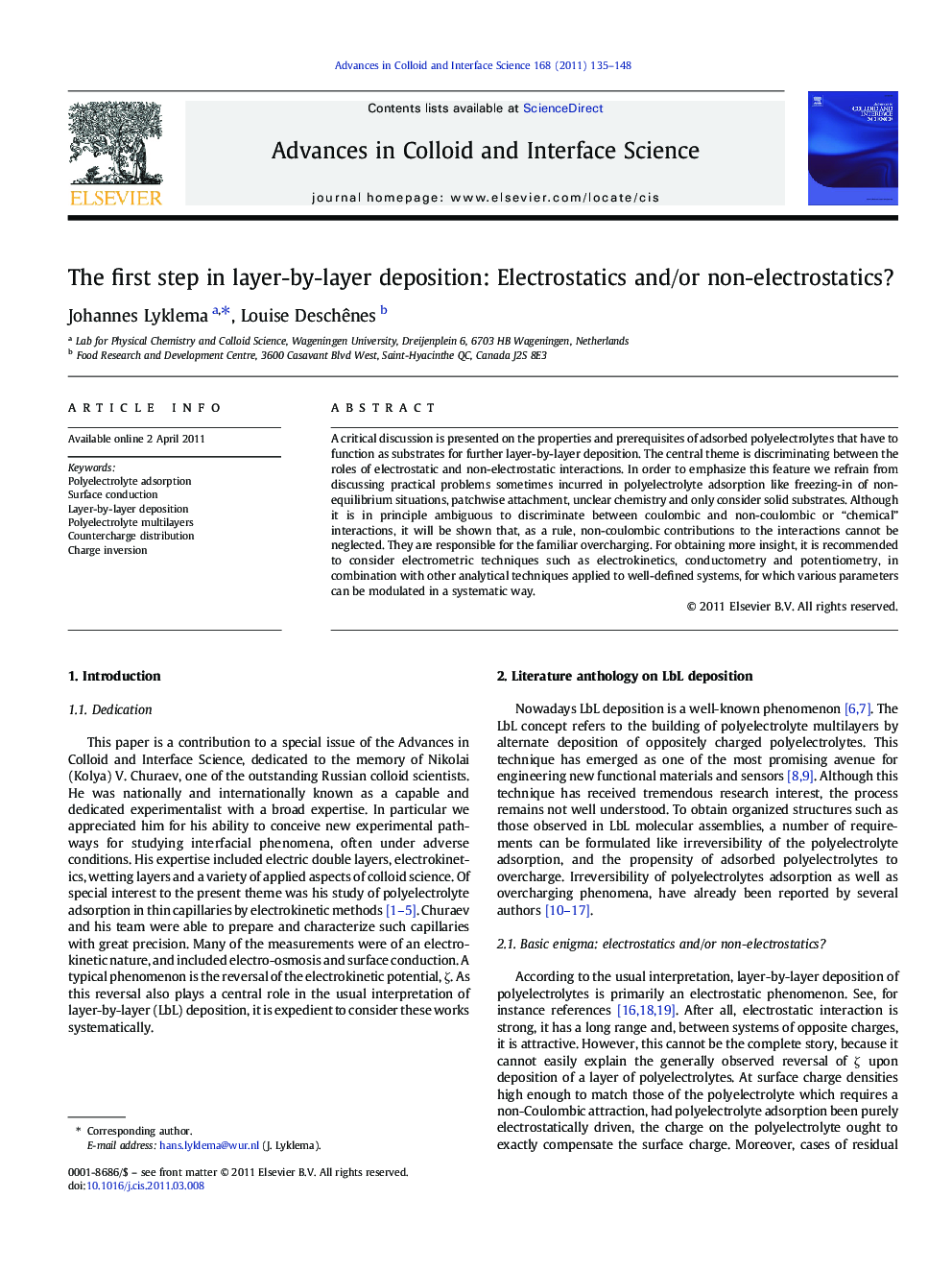| Article ID | Journal | Published Year | Pages | File Type |
|---|---|---|---|---|
| 590909 | Advances in Colloid and Interface Science | 2011 | 14 Pages |
A critical discussion is presented on the properties and prerequisites of adsorbed polyelectrolytes that have to function as substrates for further layer-by-layer deposition. The central theme is discriminating between the roles of electrostatic and non-electrostatic interactions. In order to emphasize this feature we refrain from discussing practical problems sometimes incurred in polyelectrolyte adsorption like freezing-in of non-equilibrium situations, patchwise attachment, unclear chemistry and only consider solid substrates. Although it is in principle ambiguous to discriminate between coulombic and non-coulombic or “chemical” interactions, it will be shown that, as a rule, non-coulombic contributions to the interactions cannot be neglected. They are responsible for the familiar overcharging. For obtaining more insight, it is recommended to consider electrometric techniques such as electrokinetics, conductometry and potentiometry, in combination with other analytical techniques applied to well-defined systems, for which various parameters can be modulated in a systematic way.
Graphical abstractFigure optionsDownload full-size imageDownload as PowerPoint slideResearch Highlights► Stacking of alternating layers of positive and negative polyelectrolytes on solid substrates can lead to multilayered systems. ► Many examples from the literature indicate that the binding force between the layers is not solely electrostatic. ► Non-electrostatic interactions can readily lead to overcharging, and hence to multiple stacking. ► Methods to assess the contribution of non-electrostatic contributions to the interactions are discussed. ► Many of these interactions can be observed in the interaction of the first polyelectrolyte layer with the substrate.
